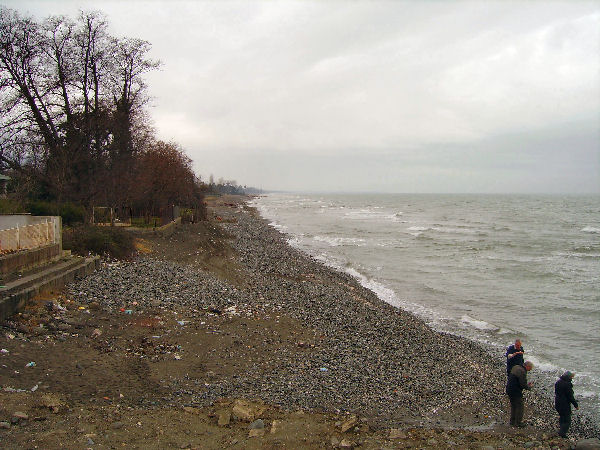Caspian Sea
Q5484Caspian Sea (Greek: Κασπία θάλαττα): largest enclosed sea on earth. Whether it was really enclosed on all sides, was hotly contested in Antiquity.

The Caspian Sea measures is about 1250 kilometers long and 450 kilometers wide, and has a surface of 371,000 km². It is the world's largest enclosed body of water. In the south, the Elburz Mountains rise immediately beyond the shore; in Antiquity, the Cadusians lived there. In the southwest, the Caucasus mountains were the natural boundary. To the east and north, the sea was - and is - surrounded by the Central Eurasian Plain, which used to be occupied by Iranian nomadic tribes like the Dahae, Sarmatians, and Scythians.
Several rivers empty themselves into the Caspian Sea, like the Volga from the north (the ancient Tanais) and the Aras (ancient Araxes) from Armenia. In a famous section of his Histories, the Greek researcher Herodotus states that this Araxes emptied itself in this sea "through only one branch".note This has been explained as a confusion with the Oxus (the modern Amudar'ya), which indeed, as Herodotus says, emptied itself in large marshes but used to have one branch that flowed to the Caspian.
The ancients believed that the Caspian Sea was exceptionally rich in fish.note The Caspian White Fish, caught off the Iranian coast, is still considered a delicatessen; sturgeon is also famous. Herodotus mentions the Caspian seals, informing us that people dressed themselves in their skins; he also refers to natural dyes.note
Herodotus was also aware of the fact that the Caspian Sea was surrounded by land on all sides.note and so was Aristotle.note but later authors denied this, and believed that the waters were connected to the outer Ocean.note Alexander the Great sent out a scientific expedition to establish the facts,note but Strabo was not impressed by what he learned from the final report.note A century and a half later, Ptolemy again held the opinion that it was not a gulf of the northern Ocean, but surrounded by land.note

The prevalent wind is from the north, which causes heavy rainfall along the southern shore, where the clouds empty themselves on the slopes of the Elburz Mountains. As a consequence, Gilan, Mazandaran, and Gorgan (ancient Hyrcania) are among the most fertile provinces of Iran.
The ancients also called this vast body of water the "Hyrcanian Sea" or, after the ethnogenesis of the Khazars, the Khazar Sea. Modern Iranians still use this name.